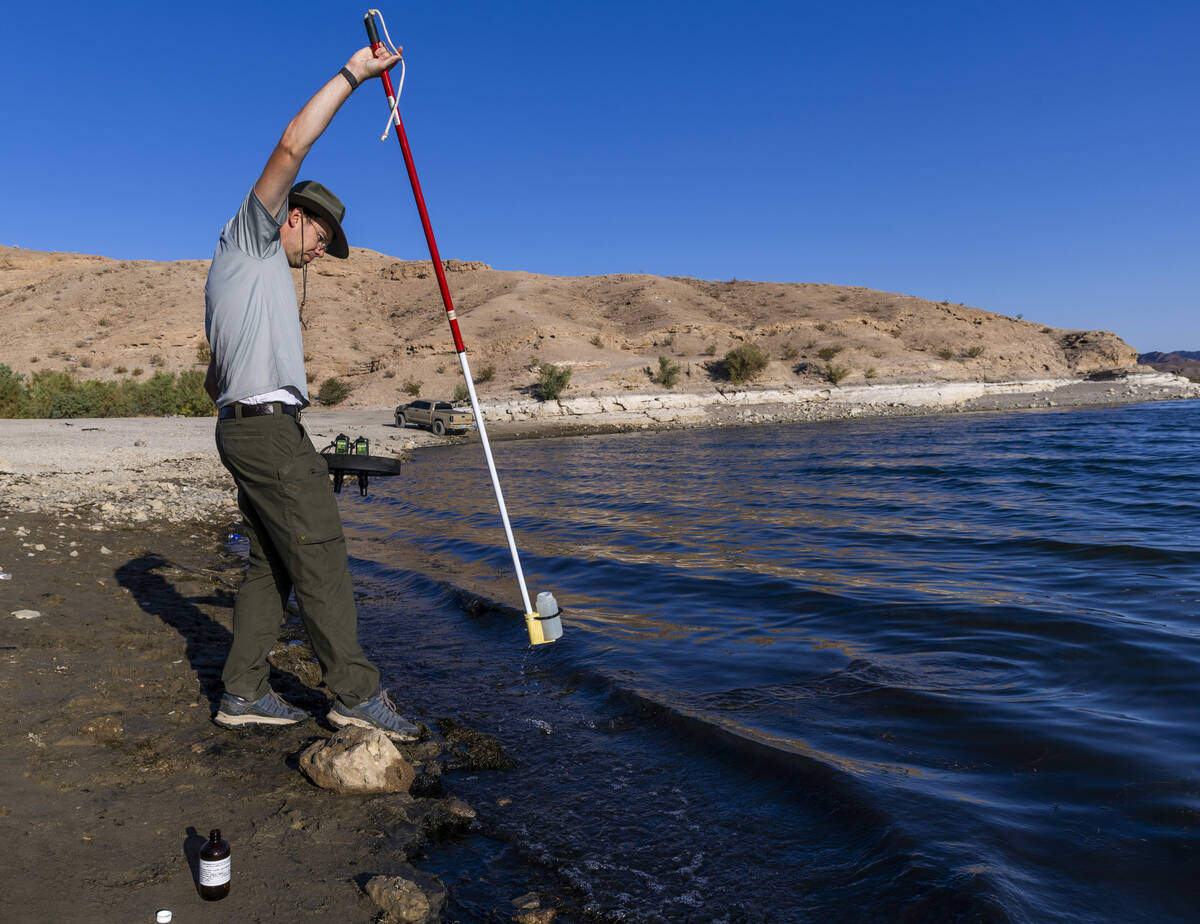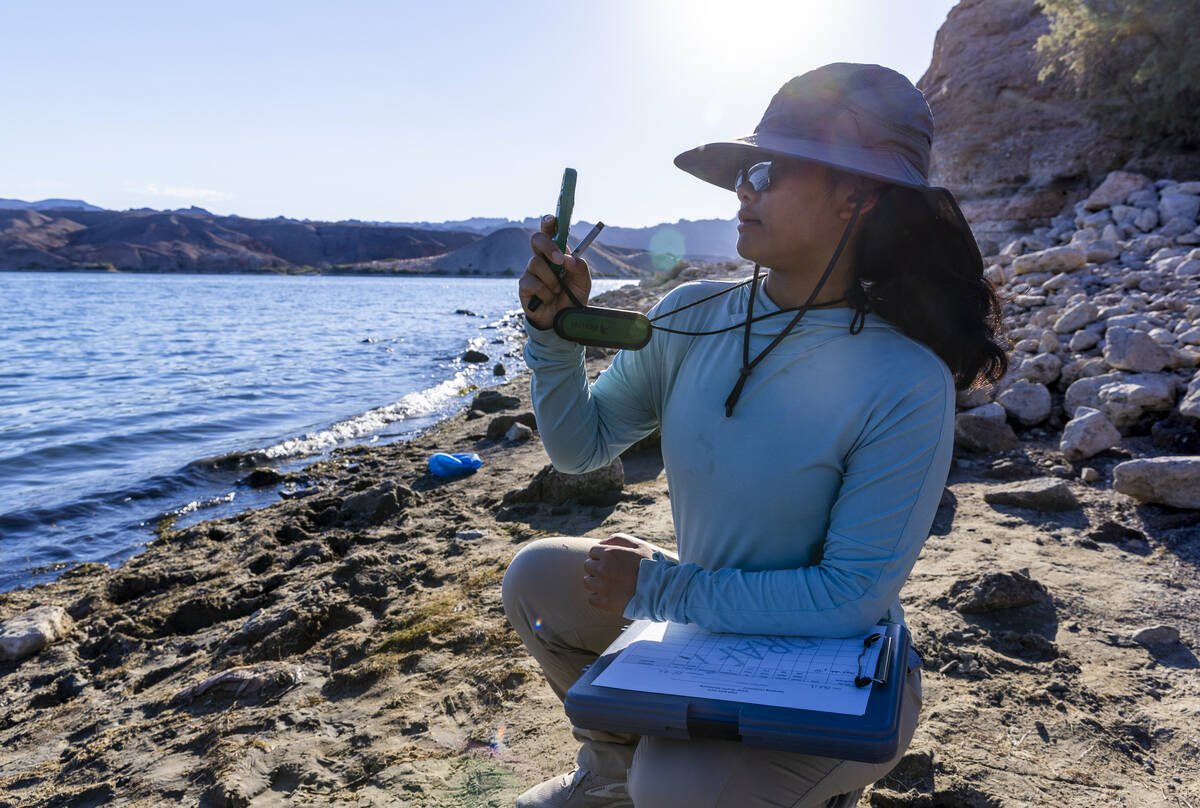Gone in a flash: Lake Mohave’s toxic algae bloom may soon let up
Riley Rackliffe follows the stinky green blobs as they travel across Lake Mohave.
The aquatic biologist leads a two-man team for the National Park Service, dipping a long stick into the reservoir’s problem areas and sending off samples to the Southern Nevada Water Authority’s water testing plant in Henderson.
Algae can be there one hour and gone the next as winds mix up the water and temperatures drop. That’s a testament to there only being algae bloom advisories along Lake Mohave rather than full closures of certain sites.
“It’s like saying there’s a bear in the woods,” Rackliffe said on the shore of Eagle Cove, a small access point near Nelson that’s been showing marked improvements in algae numbers. “We’re not going to tell you where the bear is. Just know that there are bears in the woods. Don’t leave your salmon out.”
Rackliffe and Ariel Santero, a recent University of California, Santa Cruz grad who works with the American Conservation Experience, test the water weekly for microcystin, the potentially lethal toxin produced by blue-green algae. It’s usually a call about a dog that died after drinking toxic water that clues the park service in to when it’s time to test, Rackliffe said.
Health issues possible from algae exposure run the gamut from eye irritation to liver damage.
Before the water authority began treating water at its current standard, Southern Nevada saw more widespread algae blooms, such as in 2001 when much of the lake went green. Algae is not a concern for Las Vegas’ drinking water because of advanced treatment.
What levels have shown so far
The threshold for triggering an algae bloom advisory is 8 parts per billion of microcystin, and it takes two consecutive readings under that number to lift the advisory.
At the end of September, popular swimming spot Cottonwood Cove saw 3,261 parts per billion, a staggering number that presents a clear threat to public health. All the sites sampled on Tuesday appeared clear when the Las Vegas Review-Journal tagged along with the monitoring team.
Though blue-green algae is naturally occurring and even predates human life, having a bloom so late in the year is a lesser-known effect of climate change, Rackliffe said. Algae thrives on hot, stagnant and soupy water, so Southern Nevada’s delayed reprieve from triple-digit temperatures is at least a contributing factor.
“Levels are definitely going down,” Santero said.
Across Nevada, algae problems aren’t unique to Lake Mohave. The state Division of Environmental Protection gathers data and issues advisories about algae blooms in bodies of water in any part of the Silver State.
Sometimes visual confirmation is enough to issue an algae watch. Some areas under watches include Stillwater Point Reservoir, Virginia Lake and the South Fork Reservoir.
Those under warnings, such as Lake Mohave, are those where testing has confirmed the presence of blue-green algae. That list includes the Sheep Creek Reservoir in the Duck Valley Reservation, the Lahontan Reservoir on the Carson River and the Weber Reservoir in Lyon County.
The threat may be lower now as Las Vegas dips into the 50s at night, but protection the cold provides from algae is fleeting.
“Some of those cells are going to go down to the sediment, and they’ll just stay there all winter until it warms up again and come back to the surface,” Rackliffe said. “This could very well happen again next August or September.”
For the most up-to-date information about algae watches and warnings in Nevada, visit the State Epidemiologist Office’s dashboard.
Contact Alan Halaly at ahalaly@reviewjournal.com. Follow @AlanHalaly on X.





























